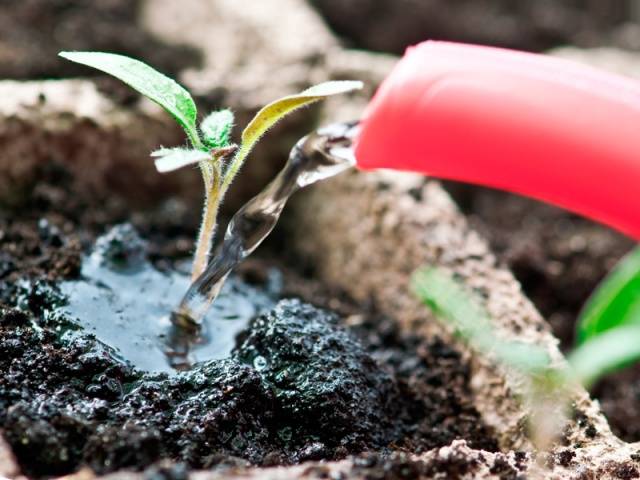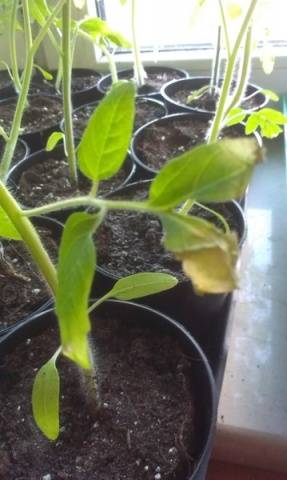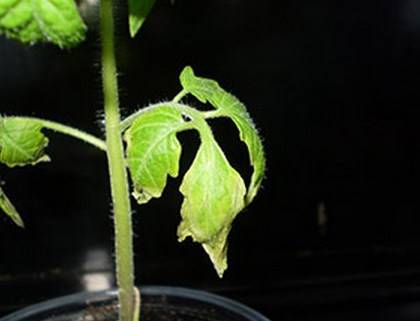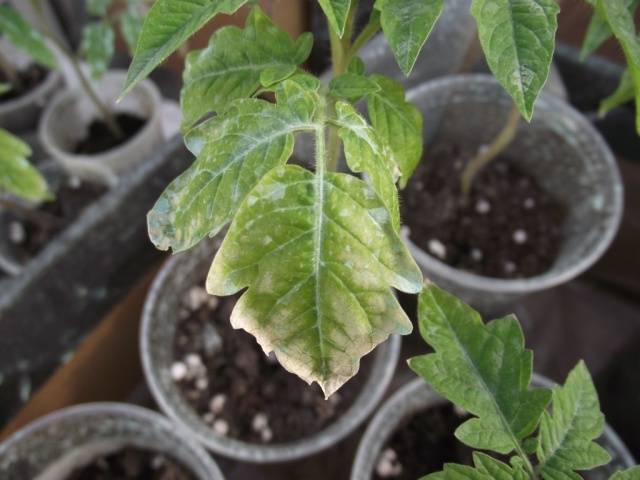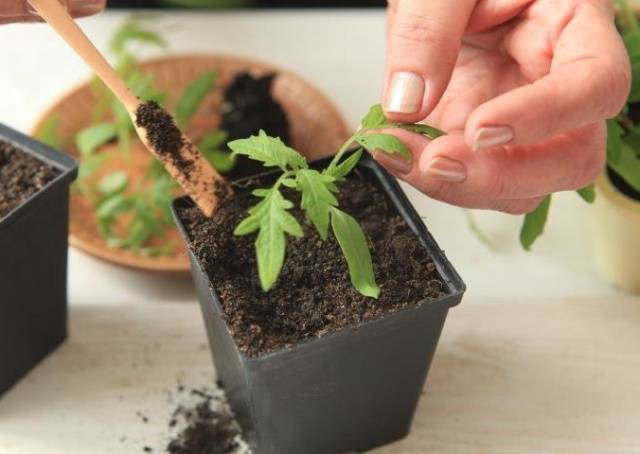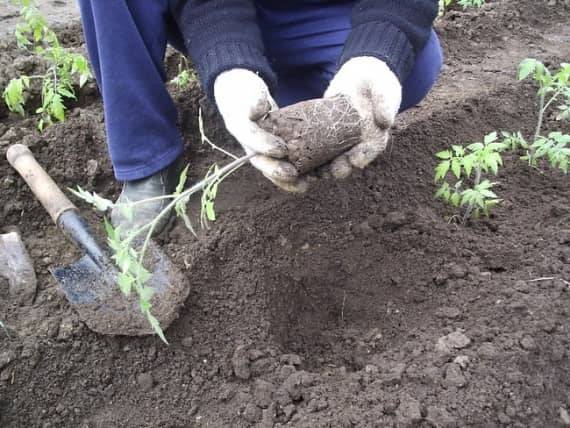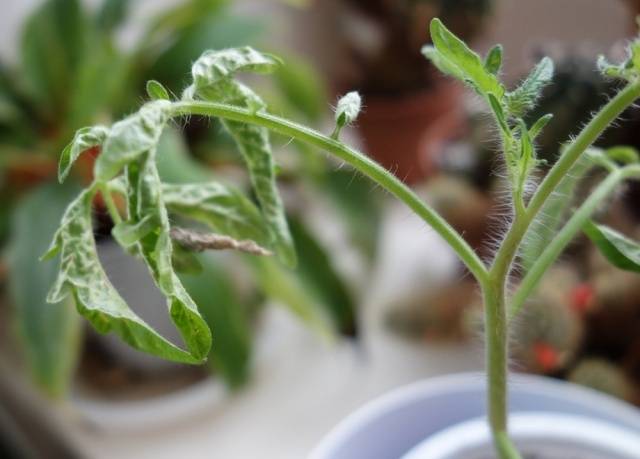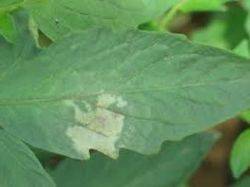Content
Surely every gardener at least once tried to grow tomato seedlings on their own. But unfortunately, not everyone and not always succeed in doing this, because even seemingly healthy, grown seedlings can begin to “mope”. So, the most common problem is that tomato seedlings leaves fall. There may be several reasons for this trouble. Often they are associated with malnutrition, irrigation of plants, the development of certain diseases or the presence of inappropriate microclimatic conditions. To solve the problem, you should analyze the situation and determine the cause, choosing a way to eliminate it.
Watering
The most commonplace reason why casting tomato seedlings can turn yellow and fall off is a lack of moisture. Water the seedlings moderately and regularly. At the initial stage, tomatoes should be watered once every 5-6 days. After the appearance of real leaves, this should be done more often: 1 time in 4 days. Plants with 5-6 true leaves must be watered every 2-3 days. Such a schedule for watering tomato seedlings is advisory. It should be adhered to, however, in sunny weather in low humidity conditions, the soil can dry out quickly enough and extra watering or spraying can be used to prevent drying out.
It is worth noting that not only prolonged drought, but also excessive watering of young tomatoes can lead to foliage falling. Being constantly in water, the roots of plants receive less oxygen and begin to vomit. A symptom of this damping off is the falling off of tomato leaves. Given such conflicting facts, it should be noted once again that watering tomato seedlings should be regular and moderately abundant.
Lighting
Another very important condition for the normal growth of seedlings is sufficient lighting. So, daylight hours for tomato seedlings should last 8-10 hours. With a lack of lighting, tomato leaves become long, thin. Their color is pale green. The consequence of such a lack of lighting can be the dropping of the lower leaves of the seedlings, which are shaded as much as possible by young shoots. You can eliminate the problem by artificially illuminating the plants with fluorescent lamps.
Temperature
Tomatoes are thermophilic plants that came to our latitudes from the tropics. However, high temperatures can severely harm young seedlings. So, the temperature is over +300C is capable of burning tomatoes. With such a lesion, tomatoes turn yellow and shed the leaves. Of course, in the spring in apartment conditions such temperature records are rare, but if necessary, spraying with a urea solution will help save tomato seedlings from the heat. To prepare it, dissolve 1 tablespoon of the substance in a bucket of water.
Low temperatures can do as much harm to tomatoes as heat. At temperatures below +100With the root system of tomatoes shrinks, it stops absorbing nutrients from the soil. Due to this hypothermia, tomato leaves acquire a bluish tint, seedlings wither and sheds the leaves over time.
Food
It's no secret that the strength and health of tomato seedlings depends, first of all, on the microelement composition of the soil.In the early stages of growth, tomatoes especially need minerals such as potassium, calcium and phosphorus. At the same time, their lack or excess can adversely affect the condition of the tomatoes. So, with a lack of potassium, yellow edges appear on the surface of the lower, old leaves of the seedlings, while the leaf plate is deformed, curling up up. Over time, these leaves dry out and fall off.
Lack of calcium is reflected in the new, apical leaves of tomatoes. With such an imbalance of matter, the leaves of the seedlings become pale, twisted. Over time, a lack of calcium leads to leaf fall and death of the plant as a whole.
With an excess of phosphorus, pale spots appear on the leaves of the seedlings, which over time rapidly cover the entire leaf plate. In science, this process is called chlorosis, you can get rid of it by introducing complex mineral fertilizers or an ash solution.
Often, tomato seedlings suffer from excess nitrogen. And even if the farmer did not apply nitrogen-containing fertilizing, the substance could get into the soil during its formation. So, the soil from the garden could be abundantly flavored with manure in the fall. Not having time to overheat by the spring, it contains a large amount of nitrogen, which can "burn" tomato seedlings.
Insufficient soil volume
After seed germination, the root system of tomatoes begins to grow and develop intensively. Moreover, she needs a fairly large volume of soil. So, sometimes as they grow, the roots of tomatoes fill the entire container with soil, tightly intertwined with each other. This leads to a lack of oxygen, and as a result, seedlings get stuck. So, gradually, first the lower and then the upper leaves of tomatoes turn yellow and fall off.
By carefully monitoring the growth process of tomato seedlings, timely transplanting plants into large containers, you can successfully avoid leaf fall due to insufficient soil volume.
Transplant consequences
Many farmers sow tomato seeds in a single container, providing for the subsequent picking of grown plants into large insulated containers. The picking process itself is carried out in the presence of 1-2 true leaves. At this time, the root system of tomatoes is already sufficiently developed and it can be easily accidentally damaged during the transplanting process. Such plants with a defect in the root system take a long time to take root, experience stress and bleat. Their growth slows down significantly. With serious damage to the root system, yellowing and falling of the leaves of the seedlings can also be observed. It is worth noting that overgrown tomato seedlings can be tightly intertwined with roots and then in the process of transplanting they will need to be torn apart, thereby harming the plants.
Problems associated with root damage are also relevant for tomatoes that have been planted in the ground. That is why it is preferable to use for growing tomato seedlings peat pots, plants from which you do not need to take out during transplantation. Tomato seedlings should be removed from plastic containers very carefully, keeping a lump of soil on the vine.
Diseases
The most common disease in tomatoes is late blight. This ailment provokes a fungus that can initially infect one bush, and subsequently spread to all nearby crops of the Solanaceae family.
Late blight can affect not only adult plants growing in open ground and greenhouses, but also tomato seedlings. Infection can occur due to the recycling of untreated containers, as well as garden soil without proper preparation. In addition, the phytophthora fungus can be found directly on tomato seeds.
Tomato disease manifests itself 10-15 days after infection. At this time, dark, sometimes gray-brown spots are formed on the leaves and stems of tomatoes. In the presence of high humidity in the room, late blight is also evidenced by a "fluffy" white bloom on the back of the leaf. The initial stage of late blight may not be noticeable to the farmer at all, while spreading to nearby tomato seedlings. However, over time, the leaves of tomatoes begin to completely become covered with dark spots and fall off.
For the prevention and treatment of tomato seedlings, special chemicals can be used. However, their use should be limited to living rooms. For preventive purposes, you can use spraying with milk whey, the acids of which inhibit the development of the fungus.
It is possible to knowingly protect plants from late blight by processing all the elements involved in the process of growing seedlings:
- Tomato seeds must be treated with a solution of potassium permanganate or wood ash before sowing.
- The soil from the garden must be subjected to heat treatment. For this, a container with earth is placed in an oven with a temperature of 170-2000From 1.5-2 hours. This will kill all pathogenic bacteria, fungus and parasite larvae.
- Plastic containers in which the seedlings were previously cultivated should be disinfected. For these purposes, you can prepare a solution of bleach, which must be mixed with water in a ratio of 1:10.
Thus, it is easier to prevent the development of late blight than to save tomato seedlings affected by the fungus in all possible ways. For more information on how to prevent and treat this ailment, see the video:
Conclusion
Tomato seedlings are the result of the persistent, painstaking, daily work of the farmer and it is very annoying when, for any reason, they start turn yellow and fall leaves of young plants. However, noticing the ailment in time and determining its cause can prevent the further development of the problem and preserve the health of the tomatoes. Timely, accurate diagnosis largely depends on the knowledge of the gardener. That is why everyone, even a novice vegetable grower, should have a certain, constantly replenishing knowledge base, based on scientific research, the experience of professional and competent farmers.

